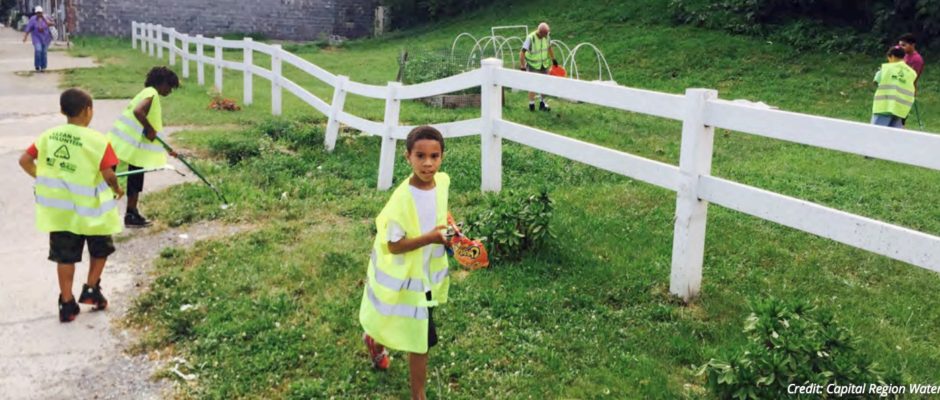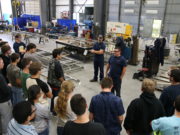Capital Region Water has embarked on a longterm community greening initiative that will reduce sewer overflows and flooding during severe weather events. The program will also ensure a quality water supply for 60,000 water customers in Dauphin County.
Other benefits include lowering the amount of pollutants flowing into the Susquehanna River and, ultimately, the Chesapeake Bay; enhancing green spaces throughout the region; and improving safety for the 100,000 customers in the five municipalities who utilize CRW’s sewage system.
Slated to be incorporated over the next 20 to 50 years at a cost of at least $100 million, City Beautiful H20 is CRW’s proposal to reduce the amount of overflow events on their combined (stormwater/sewage) pipes and sewer system.

The plan is in response to a federal mandate from the Environmental Protection Agency (EPA) to address stormwater runoff and sewage issues that impact local waterways. After reviewing a number of proposals, CRW decided that the Community Greening Plan was its best option to meet the federal mandate.
The greening program is a collaborative effort of CRW, federal, state and local government agencies, nonprofits, various community groups, and residents throughout city neighborhoods.
Gathering feedback, incorporating best practices from those recommendations and continuing an ongoing dialogue with all concerned parties is necessary to ensure the project is a success.
In addition to less crime, enhanced safety and a reduction in heat-island effect, it’s been shown that greener neighborhoods elevate property values.Claire Maulhardt, City Beautiful H20
“We’re working with the community to find opportunities in neighborhoods throughout Harrisburg for green projects to reduce street flooding, sewer backups and combined sewer overflows while beautifying our surroundings and cleaning up our water,” says former CRW Chief Executive Officer Shannon Gority.” (Gority left the organization in late 2017.)
The greening plan focuses on utilizing environmentally friendly solutions to divert, capture or slow down rainwater before it enters the sewage system and becomes stormwater. Types of green stormwater infrastructure include trees and tree trenches, pervious pavement, green and blue roofs, bioswales, rain gardens, stormwater wetlands and basins, cisterns and rain barrels, and flow-through planters.
“Because we are in an urban environment, trees and green space are quality of life aspects that everyone agrees a good city should have,” explains Williams. “It seems like a good dovetail of meeting regulatory requirements with making real improvements to our community at the same time.”

CRW officials studied community greening programs in Lancaster, Philadelphia, Washington, D.C., and the Pacific Northwest to learn about best practices and implementation methods. That research revealed that these cities have experienced many benefits beyond improvements to the quality of their water.
“In addition to less crime, enhanced safety and a reduction in heat-island effect, it’s been shown that greener neighborhoods elevate property values,” says Claire Maulhardt, City Beautiful H20 Program Manager, Capital Region Water.
Supplying city residents with a reliable and quality water supply also goes a long way in maintaining property values. CRW is placing the entire DeHart Reservoir and Watershed — whose 8,200 acres house the city’s water source — into a conservation easement for an estimated $9.2 million.
Those funds will be used to improve the area’s drinking water. Additional funding for the greening initiatives will come from user rates. CRW will be working over the next year or two to develop the most equitable rate structure for their customers based on the amount of stormwater generated by a property.



